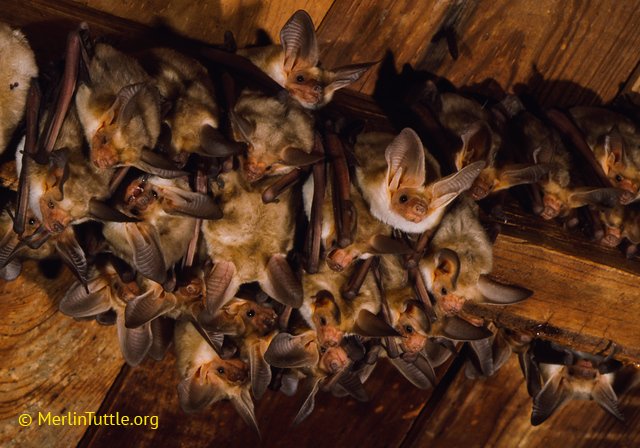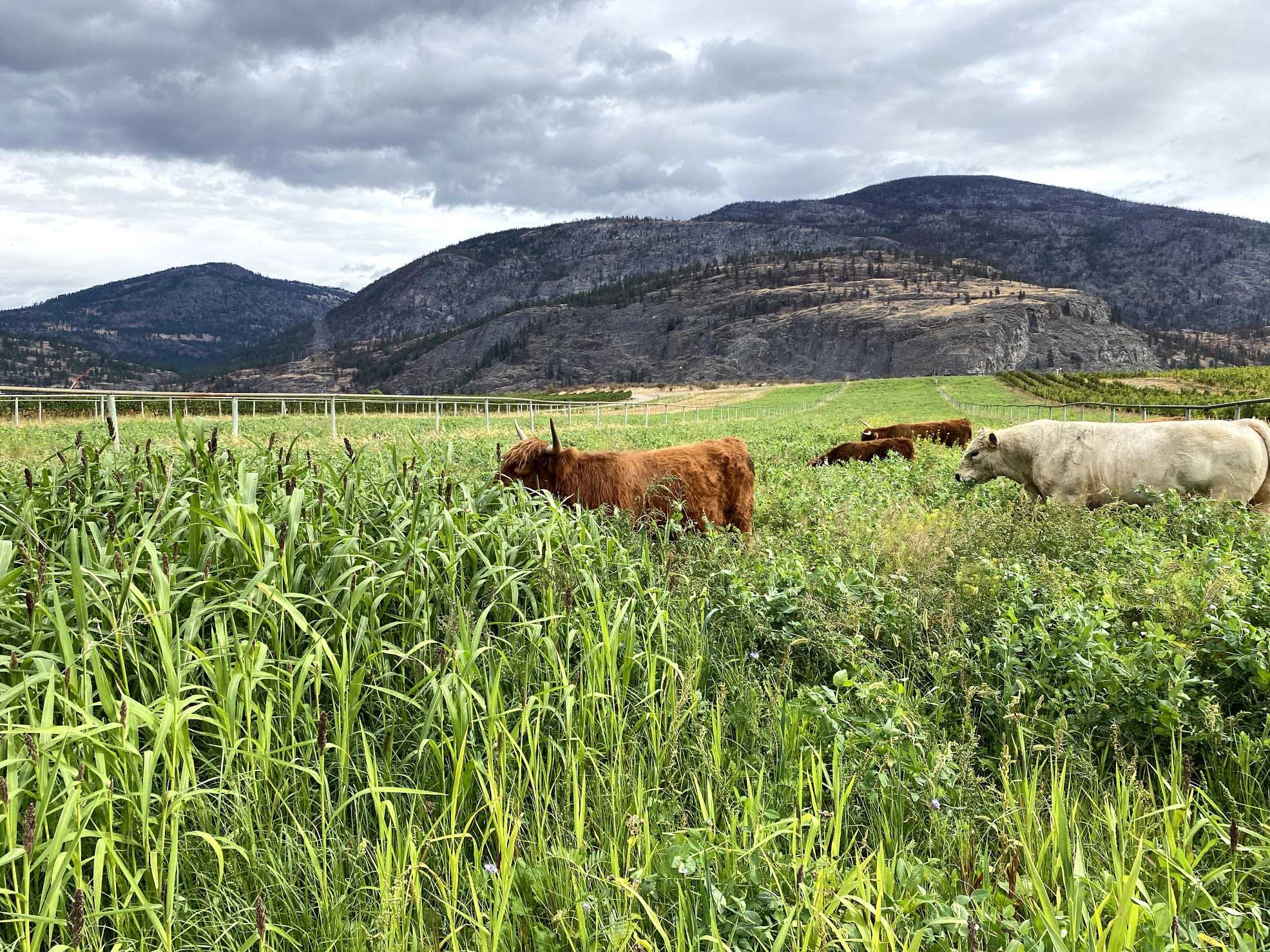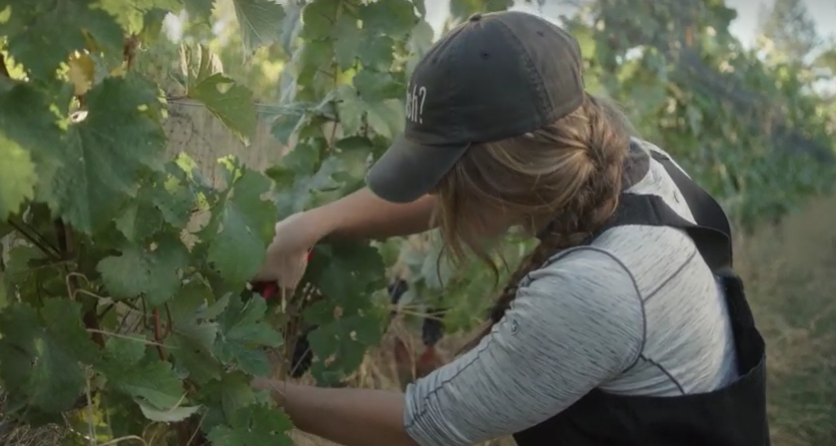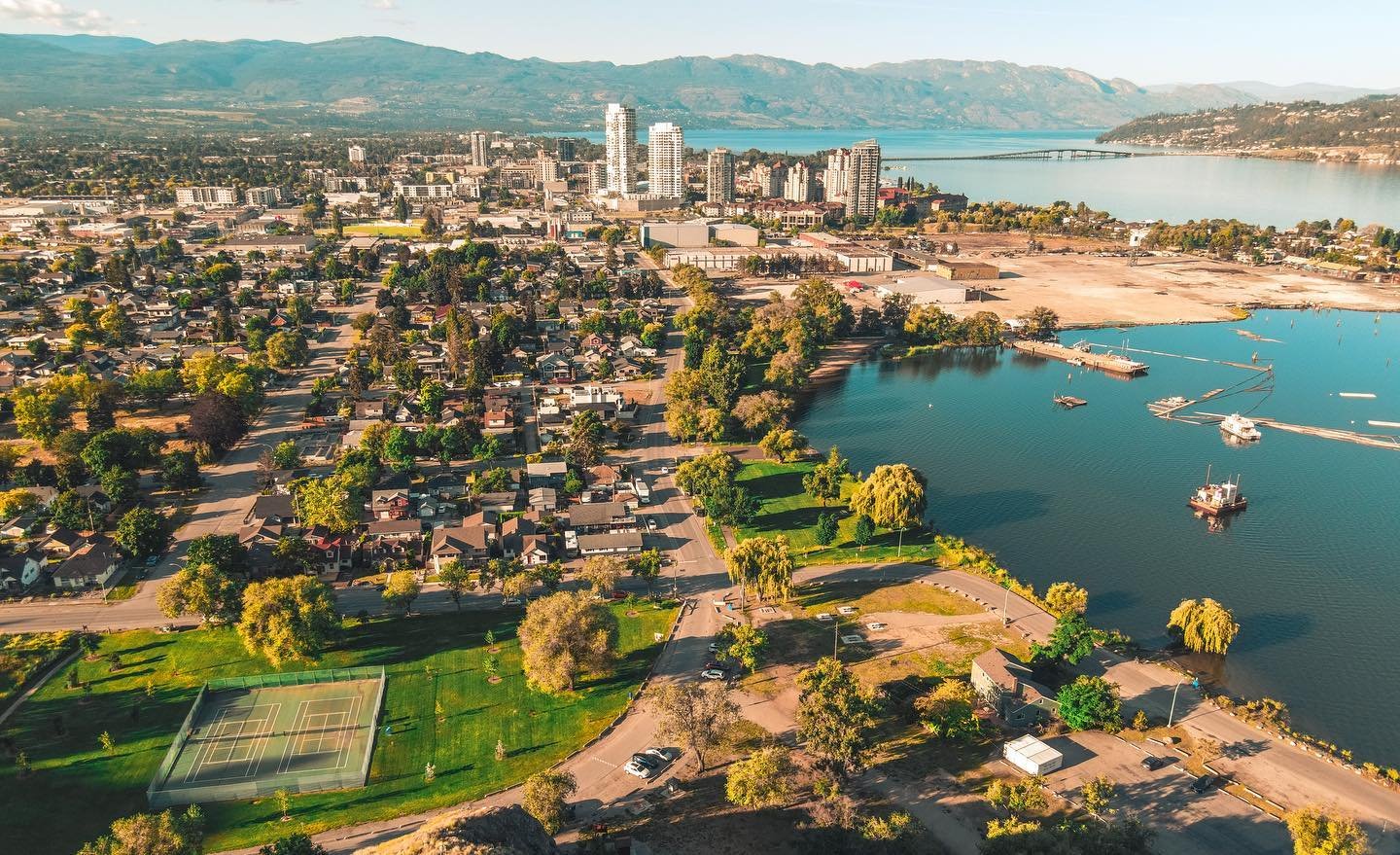Enjoy Bat Encounters in the Okanagan
The dry interior of BC doesn’t just have wine, it also has the highest diversity of bats in all of Canada. It is a paradise for nature lovers who seek out amazing wildlife encounters after dark.
Enjoy the Battiness
The dry interior of BC doesn’t just have wine, it also has the highest diversity of bats in all of Canada. It is a paradise for nature lovers who seek out amazing wildlife encounters after dark. All 14 bat species in the Okanagan eat insects and are affectionately called ‘swallows of the night’ by nature enthusiasts. Their diet includes insects like mosquitoes and agricultural and forestry pests. They provide Canadians with millions of dollars in natural pest control services.
Hibernating Bat - Photo by Eduard Kyslynskyy
Bats are found in natural and urban areas near lakes, ponds, and wetlands throughout the Okanagan. They are amongst our most common wildlife.
While visiting the Okanagan, be sure to visit the lakeshore during the first hour after the sun sets, on warm evenings, and look for bats. Bats drink while in flight by dipping close to the water. It’s one of the first things they do when they wake up at the end of the day.
Photo by Destination BC/Joann Pai
Photo by Indigenous Tourism BC / Indian Grover Riding Stables
In Canada, there are two bat species that are only found in the dry interior of BC. The Spotted bat which is unique, with black and white fur and enormous ears. It is among the rarest bats in arid regions and uses echolocation calls (a form of sonar) that are audible to humans. The Pallid bat, which in Canada is only found in the South Okanagan, eats small insects while flying and often large prey such as scorpions. They appear to be immune to the venom of their prey.
Pallid Bat
Spotted Bat, Photo by Merlin Tuttle©
Along with observing bats along lake and river shorelines, if you are interested in bats and want to learn more about them during your time in Okanagan, visit the Peachland Visitor Centre. The centre is home to a maternity roost of almost 2000 Little Brown Myotis and Yuma bats. Most evenings from June to August, you can participate in a bat count, watching bats emerge from their roost in the attic and counting them as they emerge.
Other batty activities visitors and locals can enjoy are:
Peachland Historic School - Visit the visitor centre to learn about bats. Take a walk along the Bat House Interpretive Trail. See the bat colony via webcams. Count bats as they emerge from the attic roost in the evening. Participate in their summer programs.
Kelowna’s Environmental Education Centre - Located at Mission Creek Regional Park, visit the ‘Bats: Out of the Darkness’ exhibit until mid-July. Sign out a discovery bat pack while there.
Osoyoos Desert Centre - Visit the centre to learn about bats that are unique to the desert.
Vernon’s Allan Brooks Nature Centre - Visit the nature centre to learn about bats. Participate in a summer bat talk and a bat count.
Contact the BC Community Bat Program (www.bcbats.ca) for information on bat counts occurring at SunOka Provincial Park, Okanagan Lake South Provincial Park, and Fintry Provincial Park.
Ask your resort/hotel if they have a bat roost on their property where you can see bats. Remember that bats are wild animals. Keep your distance and never touch a bat. It is illegal to harass or kill a bat in BC.
Participate in Annual Bat Counts (June - August). This involves sitting outside a bat roost and counting bats as they come out for the evening to hunt insects. Learn more at Counting bats - BC BATS
Unfortunately, bats are in trouble, and half of our bat species are listed as ‘at risk’. The majority of BC bats give birth to only one pup per year, and only about half of those young make it through their first winter. All kinds of things affect bats, including habitat loss, wind turbines, persecution by people, and susceptibility to White-Nose syndrome (WNS). WNS is a deadly disease caused by an introduced fungus that decimates bat populations.
Bats are an essential component of our healthy Okanagan ecosystems and provide important control of agriculture and forest insect pests and a natural method of control of mosquito populations. Visitors can help bats by learning more about them and supporting bat conservation. Learn about what to do if you have found a bat by visiting the Bat World Sanctuary resource.
Take the 7 Affrimations for 7 Generations Thompson Okanagan Regional Pledge to commit to caring for the land, animals, like bats, and communities of this region to ensure they continue to be prosperous for generations to come.
BC Community Bat Program (BCCBP)
The BC Community Bat Program is a network of community bat projects across BC, carried out in partnership with the Ministry of Environment. In the Okanagan region, we work with landowners to protect their bat roost sites and use bat-friendly exclusion methods, document the number of known roost sites in human-made structures, promote citizen science such as bat counts to monitor bat populations and White-nose Syndrome surveillance at active bat roosts, train Bat Ambassadors, and work with many partners towards implementation of Bat-friendly Communities.
Regenerative Farming: How Local Wineries are Contributing to the Carbon Offset Process
Thompson Okanagan's wineries are not only being recognized for their high quality and spectacular tasting varietals, but also for their efforts in sustainability and some, even regenerative farming.
Find out which Thompson Okanagan wineries have implemented regenerative farming into their production to help the carbon offset process.
With the sun shining brightly during the day and the evenings filled with peace and cool, there is no doubt that a glass of high-quality wine can be the perfect end to a summer’s day. Globally, wine is also known to have positive effects on people's health and age-related changes. In light of this, we can see that wine is celebrated around the world and is a part of most cultures.
However, did you know that today, wineries and vineyards across the globe actively work not only on the spectacular taste of their wines but also contribute to the carbon offset process by using regenerative farming methods?
As the Thompson Okanagan Tourism Association team, we want to tell you more about regenerative agriculture and highlight how local wineries and vineyards of the Thompson Okanagan are implementing regenerative practices in order to reduce their carbon footprint and preserve the land.
Thompson Okanagan's wineries are known for their high quality and spectacular tasting wines. The rich variety of wines in the region attracts tourists from around the world who wish to learn more about its history and try eco-healthy products. Thompson Okanagan’s vineyards proudly support sustainable practices and successfully work on improving regenerative farming conditions.
Farming and grazing practices based on regenerative agriculture contribute to climate change issues by restoring soil biodiversity and repairing soil degradation. These practices have a significant impact on the carbon offset progress and the water cycle.
The interesting fact is there is a difference between sustainable and regenerative farming in that the first one seeks to prevent harmful farming impacts, while the second one aims to enhance soil conditions in order to improve efficiency and reduce negative consequences.
It is good to know that investment in soil restoration can be beneficial not only for the future of our planet, but also for business growth. Using regenerative methods, farmers can increase food production, income, and topsoil quality by applying such organic farming practices as planting specific kinds of seeds (for ex., mustard) to slow erosion and improve soil health or to grow different kinds of crops on the same land in order to control erosion and moisture the soil and many other methods.
Modern vineyards use a variety of regenerative technologies in order to reduce their carbon footprint. Our team would like to introduce you to local sustainable vineyards that successfully apply regenerative farming techniques to their production - Monte Creek Winery, Covert Farms Family Estate Winery, and Tantalus Vineyards.
Monte Creek Winery - Kamloops BC
Monte Creek Winery is a recognized Thompson Okanagan sustainable vineyard, and participant of the Biosphere Commitment Program, which is dedicated to regenerative trends and implementing them in their daily operations. The winemaking philosophy at Monte Creek Winery is to produce wines with minimal intervention.
The winery shared with our team that Regenerative Techniques at Monte Creek include an organic compost program, a bird box trail, and using cover crop blends with Indigenous species. Monte Creek is proud to be Salmon-Safe Certified, which recognizes and rewards responsible eco-friendly management practices that protect Pacific Salmon habitat and enhance water quality on agricultural and urban lands.
Monte Creek Winery believes that every aspect of a farm, including the soil, water, climate, crop, people, and even buildings, needs to be carefully scrutinized as to how it relates to the other aspects to improve sustainability. When possible, businesses should strive to lessen their impact on nature while maximizing working with it.
By implementing regenerative agriculture practices, Monte Creek has achieved great improvements in soil health, an increase in biodiversity on the property, and a reduction in waste production. The TOTA team strongly believes that the winery's regenerative strategy is incredibly impressive and its results contribute greatly to environment preservation. The winery’s regenerative experience and accomplishments is a great example of significant climate change actions in order to inspire others to start their own regenerative journey.
““Regenerative farming actually isn’t a new technique. This type of farming was lost for a while with the industrialization of farming.
Going back to our roots, back to the way things used to be isn’t as hard as you think. Every little action can build up to make a big difference.” ”
Covert Farms Family Estate Winery - Oliver BC
Covert Farms Estate Winery is a regenerative vineyard and a Biosphere Committed Business, which actively promotes regenerative and sustainable farming trends and successfully contributes to the carbon offset processes.
Covert Farms Family Estate Winery was established in 1959 and is a fourth-generation 650-acre organic farm, vineyard, and winery. For the winery, the core theme of regenerative farming is constantly improving soil health, which leads to improved plant health. In their case, it provides optimized flavour and varietal characteristics of their grapes and results in a more resilient vineyard to climate variations.
The winery has been certified organic since 2005 and biodynamic since 2008, they made the switch to regenerative farming six years ago. They promote the following practices:
Land stewardship, including avoidance of mechanical disturbances, which damages the soil and organic matter underground;
Cover crops to protect the earth from scorching sun and other climate extremes;
Crops rotation to create a balanced and varied ecosystem;
Livestock integration throughout the entire landscape. They have nearly 30 Highland cows that graze their vineyards, and push nutrients deep into the soil.
Another impressive fact about Covert Farms Family Estate Winery is its contribution to the regional water supply. Since regenerative farming has a great impact on the water cycle, the winery plants humus, which acts like a sponge for water and nutrients. Keeping those key resources on the farm and using them efficiently helps protect the Thompson Okanagan region’s water supply from overuse and contamination from runoff.
Over the last five years, Covert Farms Family Estate Winery has determined outstanding results such as ever-increasing organic matter in their vineyard soils, as well as reductions in fertility need and water. Of course, changes cannot always be linear and progressive. Despite the heat, smoke and pests, the winery successfully continues to contribute to land preservation and carbon emission reduction.
The winery’s experience is a great example of the successful implementation of regenerative farming practices, which bring benefits to both the vineyard and the planet.
Tantalus Vineyards - Kelowna BC
Tantalus Vineyards is one of the local prominent proponents of regenerative agriculture practices and an active participant of the Biosphere Commitment program. Regenerative farming is a vital pillar of their businesses' commitment to sustainability and good land stewardship.
The Tantalus Vineyards team believes that encouraging biodiversity in monoculture farming brings countless natural benefits, not only to the land and the employees who work the land, but to the health of the vines, grapes, and therefore the quality of their wines.
“It’s a small but tangible impact we can make by way of our business” - Stephanie Mosley, Marketing Manager, Tantalus Vineyards.
The team at Tantalus stepped away from the idea to get the best harvest at any price many years ago and has been working towards a holistic regenerative approach for several years now. Key additions to Tantalus’s regime were the implementation of no-till cover crops, the reduction of mowing passes (alleviating soil compaction), plant sap analysis to determine vine nutrient status, and corrective foliar application of fertilizers where needed.
Moreover, two years ago, through a partnership with the Investment Agriculture Foundation of B.C. Tantalus acquired a state-of-the-art, “no-till drill” that has allowed them to optimize the cover crop practices. Other pieces of their program include an onsite grape waste compost program and many others.
The Tantalus Winery’s team believes that regenerative farming is important in the Thompson Okanagan, since BC and the Southern Interior are seeing more and more extreme weather events. It is more important now than ever before to make a shift towards regenerative practices that correlate to carbon sequestering and improved water retention and biodiversity. They stand behind ensuring better health and resiliency in their farms and crops, by way of regenerative practices ,to help ensure greater economic viability for not only the winery, but their communities too.
“It’s not complicated and it’s a lot more unlearning than learning. It’s shifting the ideology of farming away from the ag-chem era and returning to a time before synthetic fertilizers and pesticides took over. ”
The Thompson Okanagan region’s wineries are bravely facing all obstacles on their way to become more regenerative and positively influence on the local environment conditions. The mentioned examples are full of inspiration and strong motivation for everyone who has a desire to improve their eco-behaviour. They are sure the regenerative way is possible for both individuals and businesses and their experience is evidence of successful regenerative farming practices implementation.
Mindful travellers who are looking to enjoy a destination’s wineries should try to choose wineries that follow regenerative farming tendencies as they contribute significantly to the planet’s future. It is important to remember that there is no quick and easy way to change the world, but there is a right way and businesses like Monte Creek Winery, Covert Farms Family Estate Winery, and Tantalus Vineyards are ready to help you to find it.
Written by
Aleksandra Stroganova
Aleksandra is an international student in Vancouver, BC. With a passion for sustainable travel development, she hopes to show people the beauty and importance of responsible travel and inspire them to start their own mindful journey.
Mindful Tourism in the Thompson Okanagan: What, Why, and How?
While you are travelling, it is a great time not only to enjoy the true beauty of new local places, but also to contribute to the future of our planet and destinations by participating in sustainable initiatives and learning relevant "green knowledge" for your travels.
With summer in full swing, the Thompson Okanagan region welcomes many tourists to discover spectacular views, captivating routes, and delicious cuisine. There is an abundance of exciting tourist attractions and businesses throughout the region, thus travellers around the world will experience bright and lasting memories.
While you are travelling, it is a great time not only to enjoy the true beauty of new local places, but also to contribute to the future of our planet and destinations by participating in sustainable initiatives and learning relevant "green knowledge" for your travels.
To help you turn into an eco-hero and a mindful tourist, we invite you to learn more about "Responsible Tourism" and how easy it is to practice.
What is Mindful Tourism?
Mindful tourism is aimed to minimize tourism’s possible harmful impact to the environment, social, and economic structures of local societies through sustainable actions. It is a unique concept in that most of the required actions to protect destinations are easily attainable by travellers regardless of their travel goals and experience levels.
Today, as the world faces social, economic, and environmental challenges, the tourism industry can have negative impacts when visitor activity exceeds the environmental capacity. In fact, we can witness it when small beaches are crowded with tourists and there is nowhere to put even the tiniest stone, or when fields of flowers do not bloom because people pluck even unopened buds. As a result, natural areas worldwide are at risk from uncontrolled conventional tourism.
Why Mindful Tourism?
With these issues also comes many solutions and practicing mindful tourism can help solve said issues, contribute to the local economy, connect people to learn from one another, and protect local culture.
Thus, travellers who practice responsible tourism help to preserve the local nature and culture as well as inspire others to respect and improve the places they visit.
Now that you have seen all the benefits of Mindful Tourism, we know you are eager to get started. So, how do you practice mindful tourism you might ask?
How to Practice Mindful Tourism
Mindful Tourism is practiced differently by each individual. The following examples can be used as inspiration when planning your next trip:
Transportation
Avoid planes or take non-stop flights to reduce your Carbon Footprint
Walk or rent fuel free modes of transportation where it is possible. For example, you can rent E-Kruise electric bikes in Kelowna and Penticton, or use the electric scooters located throughout multiple communities in the Thompson Okanagan
Accommodation
Choose eco-friendly hotels. For example, Cedar Haven Resort in Clearwater, Best Western Plus in Kamloops and many others
Do not change towels, and sheets every day
Exploring
When exploring outdoor trails remain on designated paths to avoid damaging surrounding vegetation
Utilize proper gear for activities like rock climbing to avoid damaging rock faces
Use lake friendly sunscreen to protect the marine life and eco system in the lake
Reduce Energy Use
Turn off the light, gadgets, and air conditioning when you leave a room
Avoid Single-Use Disposables
Try to use reusable bottles, mugs, shopping bags and containers for leftovers when possible
Say no to plastic
Recycle and compost when possible
Support Locals
Shop local food and artisan products for quality items and to support local businesses. For example, Klippers Organics Acres in Keremeos, Parlour Ice Cream in Kelowna, and many others
Avoid all-inclusive packages
Plan an Indigenous cultural experience with the Indigenous BC Trip Planner App
Respect Local Culture
Take care of heritage places
Leave no trace
Respect local culture and traditions. Enjoy the unique aspects of a community as you observe the local’s behaviours, cuisine, and gatherings. You can also take Indigenous tours and visit Indigenous businesses to learn more about the local Indigenous culture in the Thompson Okanagan and worldwide
Of course, it can be a challenge to follow all steps, however, it is important to remember that even one reasonable action can make a positive change.
Mindful Tourism in the Thompson Okanagan
As the Thompson Okanagan region is a Biosphere Certified Destination, there are many opportunities for you to chose sustainable businesses as a way of practicing Mindful Tourism. There are 85 Biosphere Committed Companies throughout the region that have implemented sustainable methods into their business and stand for the planet’s future.
What is more, the Thompson Okanagan region has its own Pledge which honours the Indigenous philosophy of the 7 Generations, signifying that what we do today will impact 7 generations to come. The 7 Affirmations Pledge includes 7 significant affirmations:
True Roots
Tread Lightly
Be a Good Neighbor
Travel Safely
Live in Harmony
Choose Local
Educate Others
Each acts as a different practice one could implement in their daily life and while travelling. On your way to becoming a mindful tourist, you can sign the sign the pledge and officially recognize your commitment.
Being a mindful tourist may sound daunting, but every effort counts when reducing the impact of tourists on destinations and the planet. Visit eco-friendly resorts, sustainable vineyards, farms, and many others that open their doors for travellers in order to help you take your own green steps. With a few considerations, you can be sure that Mindful Tourism is possible and that your trip will be filled with eco-benefits and good memories.
Written by
Aleksandra Stroganova
Aleksandra is an international student in Vancouver, BC. With a passion for sustainable travel development, she hopes to show people the beauty and importance of responsible travel and inspire them to start their own mindful journey.
































